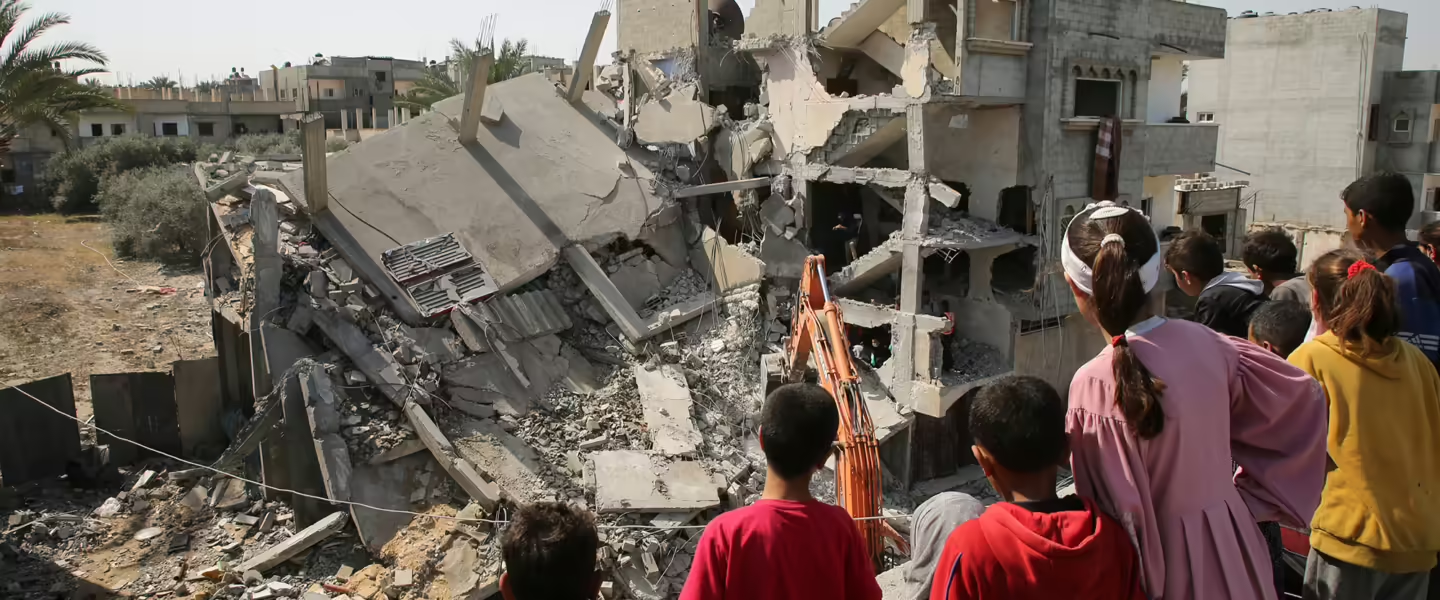Just about everyone demands a halt to carnage in Gaza. Pressure is building on Biden to stop arms shipments to Israel, which may be the deciding factor.
|
Listen To This Story
|
It has been over two weeks since the United Nations Security Council passed Resolution 2728, calling for an immediate ceasefire in the Gaza Strip along with the release of all the hostages held by Hamas.
Coming after six months of failed drafts proposed by Algeria and the US, and at least four US vetoes in the UN, the resolution clearly leans toward Israel. It calls for Hamas to release all its hostages while not specifying any reciprocal releases by Israel.
That hasn’t stopped Israel’s Netanyahu-led government from continuing to criticize both the UN and the resolution. Israel’s minister of national security, Itamar Ben-Gvir, publicly labeled it “anti-Semitic”; Prime Minister Benjamin Netanyahu denounced it as a “clear retreat from the consistent US position.” The main Israeli argument is that the resolution gives “Hamas hope that international pressure will force Israel to accept the ceasefire without the release of our hostages, thus harming both the war effort and the effort to release the hostages.”
For its part, Israel bases its continuing offensive in Gaza on Article 51 of the United Nations Charter, which states:
Nothing in the present Charter shall impair the inherent right of individual or collective self-defense if an armed attack occurs against a Member of the United Nations until the Security Council has taken measures necessary to maintain international peace and security.
What distinguishes Ukraine fighting off a Russian invasion of its territory from Israel’s attacks in Gaza is that the Ukrainians are fighting on their own territory, and there is no question that the enemy consists of regular Russian military forces or that Ukraine’s ultimate survival is at stake.
In contrast, the attacks in Gaza are outside the territory that Israel regards as a functional part of Israel. It’s evident that Israel could readily defend itself without needing to go into Gaza. The slaughter of more than 35,000 civilians is nothing less than collateral damage on a massive scale, and it has more to do with ethnic cleansing and revenge than any national fight for survival.
Israeli lawyer Nitsana Darshan-Leitner dismissed the massive Palestinian casualties — most of whom are women and children — by noting that “in a war, people get hurt.” Not surprisingly, Netanyahu blames Hamas for the civilian casualties, claiming that Hamas uses innocent Palestinians “as a human shield.”
There is no question that Hamas was responsible for initiating the current carnage, but in the end, the decision to engage in massive bombing and to use deadly weapons in one of the world’s most densely populated areas was made by Israel alone.
Resolution 2728 calls on Israel to “expand the flow of humanitarian assistance” and for the “reinforcement of the protection of civilians in the entire Gaza Strip.” It also calls for the “lifting of all barriers to the provision of humanitarian assistance at scale, in line with international humanitarian law.”
Israel’s response has been to give lip service to the demands, while continuing the attack. A spokesman explained:
Israel does more than required. It drops flyers over Gaza to tell people to vacate the area. It makes phone calls to local civilians to vacate the area. Once Israel has taken these precautions, it’s allowed to take down the building. If civilians prefer to stay — they take their responsibility.
Netanyahu appears determined to hold onto power until the end. The UN charter has provisions to enforce the peace that include an “application of a range of coercive measures, including the use of military force.” Nearly anything requiring military action, however, needs to go through the Security Council, where China and Russia have already demonstrated that they would likely veto any resolution that did not favor Palestinians. The US, for its part, is likely to veto any resolution that limits Israel.
The horror of Hamas’s October 7 attack still serves as a powerful argument for supporters of Israel. There is no guarantee, however, that regional groups outside the UN will not eventually take action.
Regional partnerships such as NATO, the European Union, or the African Union can intercede effectively depending on the nature and location of a conflict. An example of a regional partnership that worked was the 1992 mission in Bosnia, which included a series of joint air operations involving NATO military forces.
Another alternative involving the UN — one not dependent on the cooperation of the Security Council — is to arrive at a “Uniting for Peace” agreement. If the UN’s Security Council is permanently blocked on an issue by vetoes, the UN’s General Assembly can make decisions that would normally be made by the Security Council. That approach was used during Israel-Palestine conflicts in 1980 and 1997.
A simpler approach would be for the Biden administration to threaten to cut off further arms shipments to Israel — a politically risky option, but one that is likely to cause the least damage.
The bottom line is that a variety of responses can be used to resolve the Israel-Gaza conflict. What is needed now is a decision concerning which one to use. The initiative can come from Israel, the US, the UN, or regional organizations. The fact that the US abstained and decided not to veto Resolution 2728 is an indication that virtually the entire world — including throngs of protesters in Israel — want the war to stop. Change is coming soon. How many Gazan Palestinian civilians will still be alive to see it is another question.




